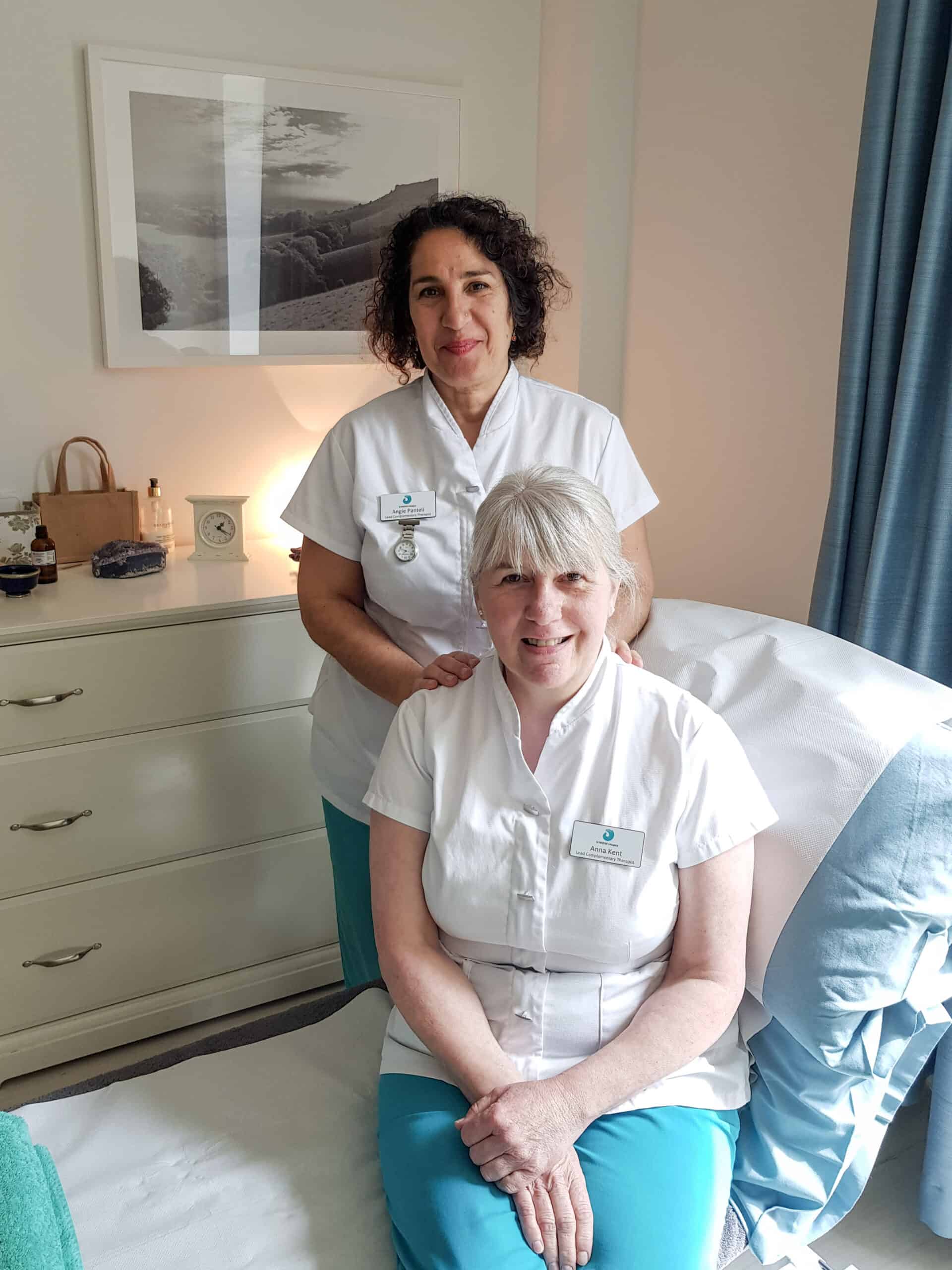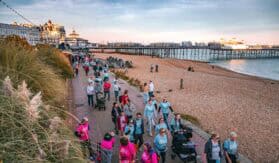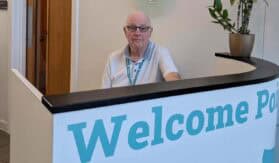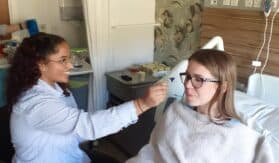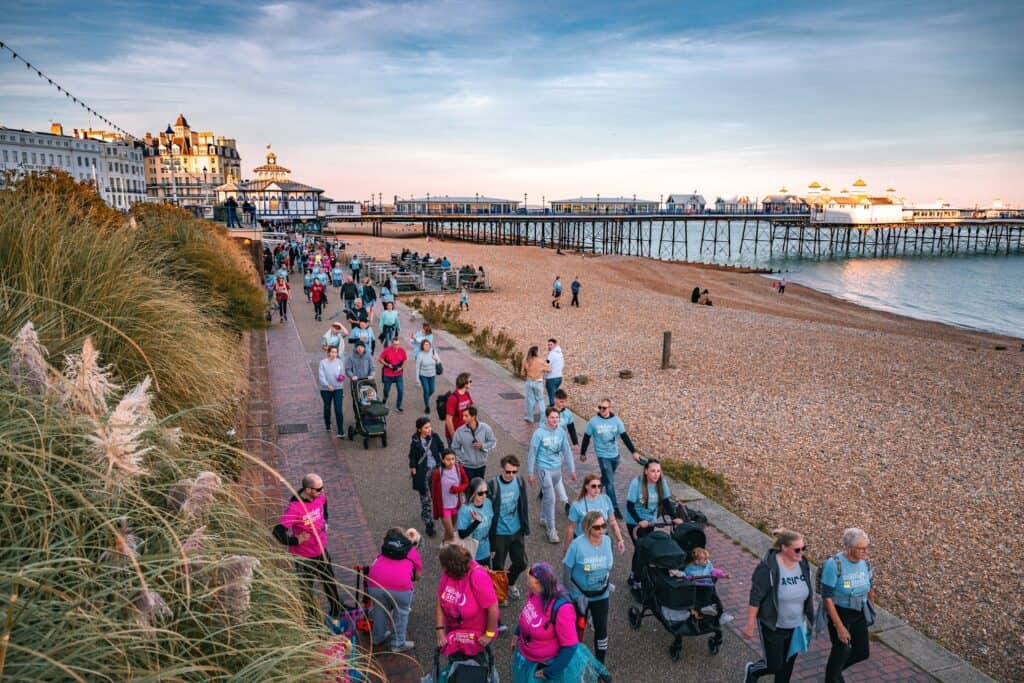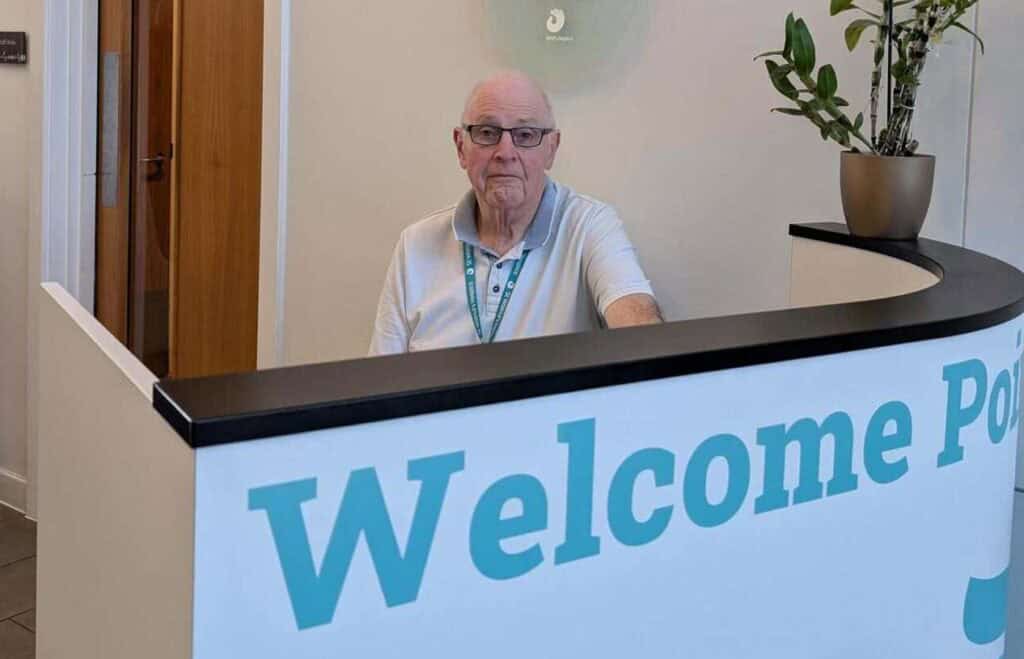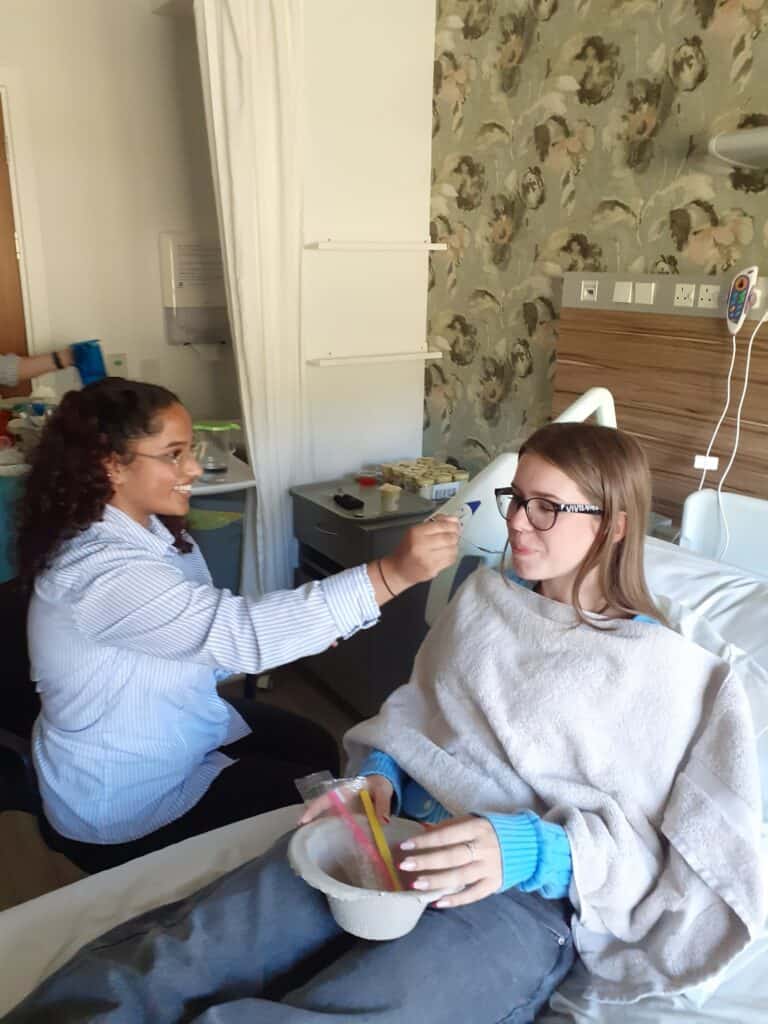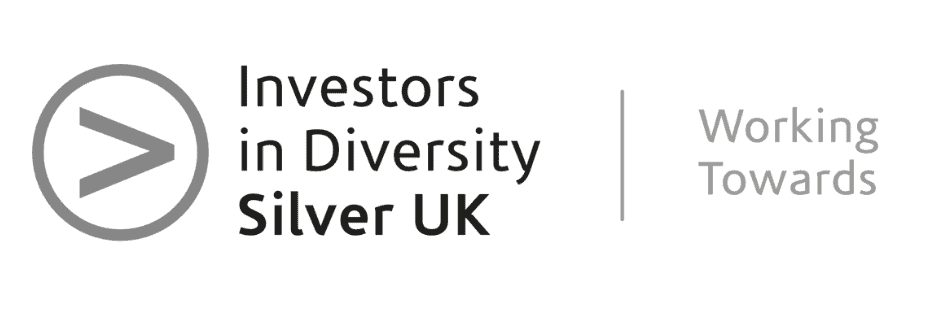‘They called us the Lavender Ladies!’
We recently spoke to Lead Complementary Therapists, Anna Kent and Angie Panteli, to find out more about their roles and, in the spirit of our 40th anniversary, how their jobs have changed over the years.
What are Complementary Therapies?
Complementary therapies are therapeutic treatments which are used alongside conventional medicine to support patients’ symptoms. The aim is to promote relaxation, reduce stress, tension, and anxiety, and help with coping strategies for symptoms such as pain, nausea and breathlessness. At St Wilfrid’s, the treatment modalities on offer include massage, reflexology, aromatherapy, relaxation and reiki.
Pre-pandemic, the Complementary Therapies team would see patients through outpatient clinics in the Wellbeing Centre, in the Inpatient Unit, and out in the community. That has all changed in the past year, but the team have been incredibly resilient – as they have always been in the 15+ years they have been working at the hospice.
Back to the beginning
Angie began working at the hospice in November 2004, when the hospice was still in Mill Gap Road, and was a Reflexologist out in the community at first. A year later, Anna joined the team after having previously done a placement there.
‘Anna was our first student at the hospice,’ Angie told us. ‘She did her placement and then went about her business. At the time, there was another Complementary Therapist called Anna and one of our colleagues thought she was calling her, but she called this Anna instead. We needed cover for my maternity leave, and while our colleague was on the phone, she mentioned to Anna that the post was coming up, so Anna applied, got the job and the rest is history!’
‘It was a bit of a test, seeing if I could work in a palliative care setting, but I just loved it,’ Anna said. ‘Quite early on there was a young patient on the ward and they were having a big party. I was thinking “gosh, I thought it was supposed to be all doom and gloom and quiet”, but there was music and balloons, and people laughing and singing – it was fantastic. That really set the scene for how I thought about the hospice.’
Adapting to change
While the hospice in Mill Gap Road was a very homely and comforting place, it wasn’t purpose built to be a hospice, meaning that there wasn’t much space for treatment rooms.
‘It was a bit of a rabbit warren,’ said Anna. ‘The new building here has definitely improved things and the facilities are more bespoke.’
‘It felt like the IPU and Day Therapy were very separate, whereas now there’s more of a merge with services.’ Angie added.
As well as changes to the hospice, the team have seen their roles change and develop over the years.
‘I’ve always felt that our role is a bit of a pioneering one,’ said Angie, ‘Imagine, 20 or 30 years ago, suggesting an aroma stick for someone that feels sick, or reflexology for constipation, when they might be used to having medication. We’ve still had to explain to people what our role involves, but we’ve been very fortunate that we’re supported by our doctors and nurses.’
‘There has been more research into complementary therapies over the years,’ Anna added. ‘Things like aromatherapy are more familiar to people now and it’s become more accepted.
‘We have been very adaptable to whatever changes have been made or have been expected of us, and we’ve also sometimes instigated changes and found ways to make our role a little bit different or more integrated,’ she said.
‘At Mill Gap Road, Day Therapy (what is now Wellbeing) was more of a social and we would literally go around the room doing treatments for everybody who wanted one. They called us the Lavender Ladies because we had violet-coloured uniforms and we pampered people! It was different to how we work now. Now our role has become focused on symptom management.’
With their work usually being very hands on, adapting to the Covid-19 pandemic was a huge change, but they quickly began providing patients with telephone support, signposting them to a variety of resources and also sent out aroma sticks and relaxation CD’s to help with symptoms. Angie also got involved with making some videos for our website and started offering 1:1 virtual relaxation sessions to patients virtually.
In May she launched a Zoom relaxation group, which has proved to be very popular, and since then she also started a smaller, interactive group, teaching people self-massage, which is also going well.
‘It’s a special place’
Finally, we asked Angie and Anna what their favourite thing about working for the hospice is.
‘For me,’ said Anna, ‘it’s engaging with people and providing a treatment that you know has benefits. People are often surprised at how powerful some of the things are that we can help them with.’
‘You can physically see the difference that you’re making when you’re giving someone a treatment,’ Angie added. ‘You might see them fall asleep, relax, or smile, or they might become less breathless. It’s nice to be able to make a difference to people’s lives and their journey.
‘Also, we’ve seen a lot of changes in the hospice and in our role, but I feel the opposite way too, like the hospice has seen me through a lot of personal changes and it has been the constant in my life for the last 17 years. I joke about us being work wives, but it does feel like a family. It’s a special place and you don’t often get that in life.’

